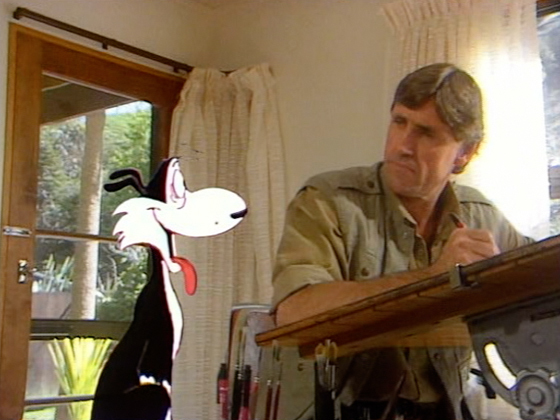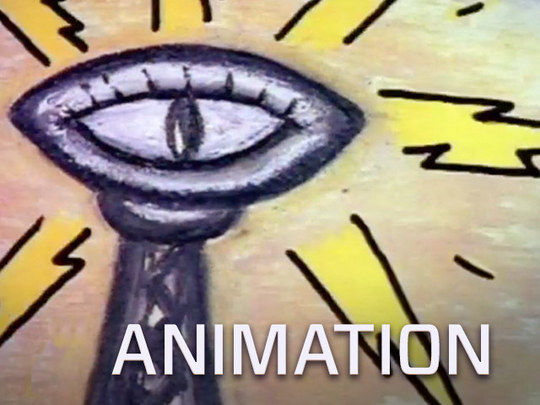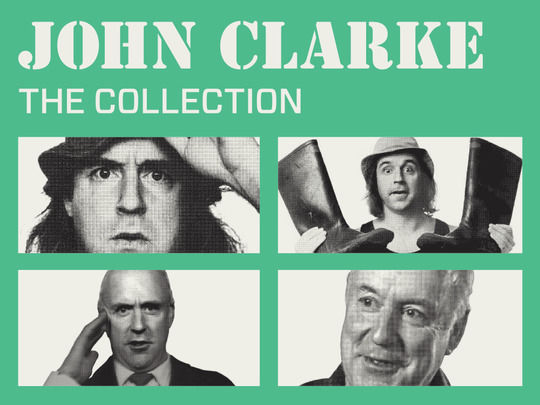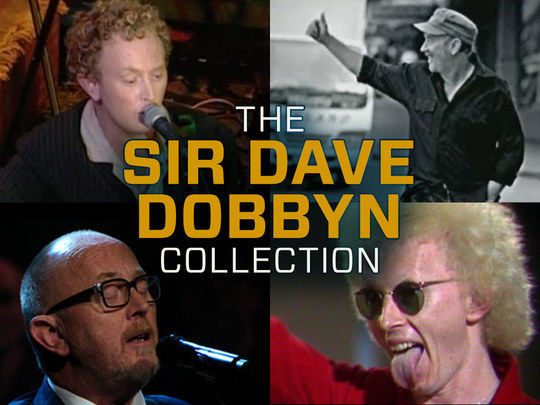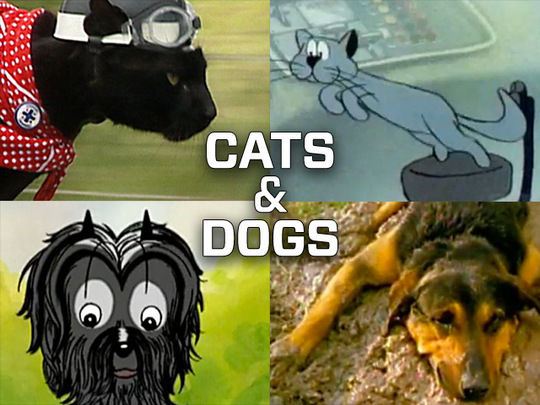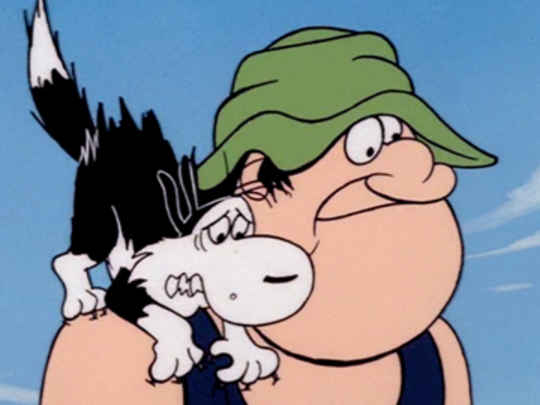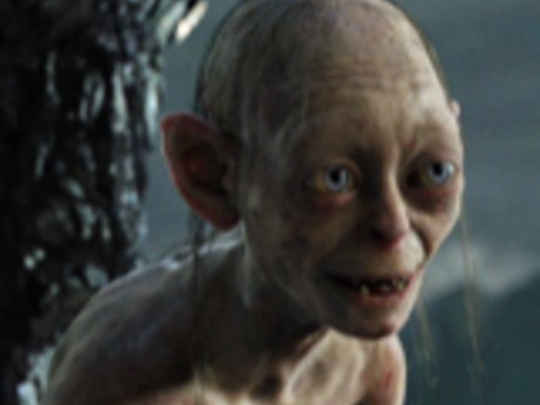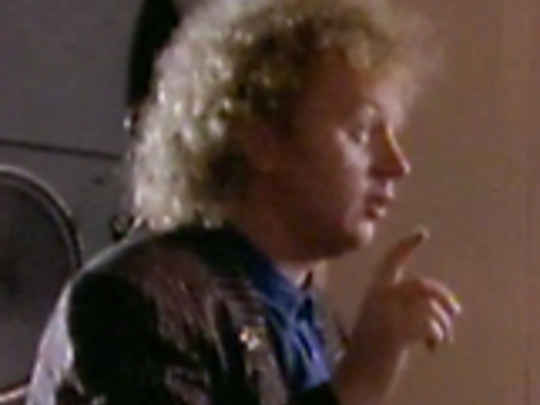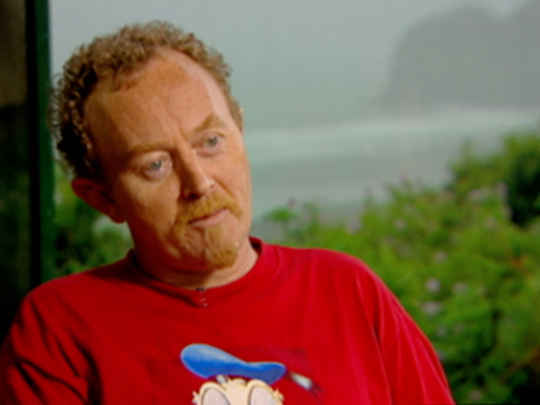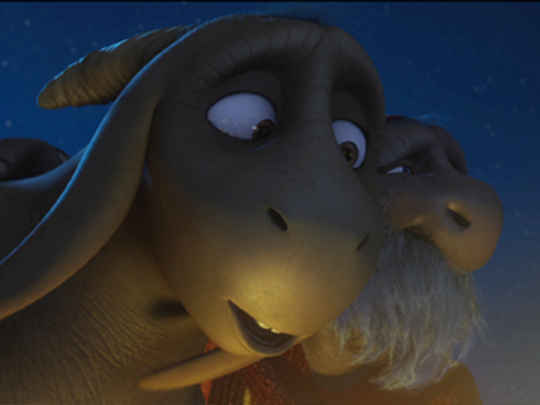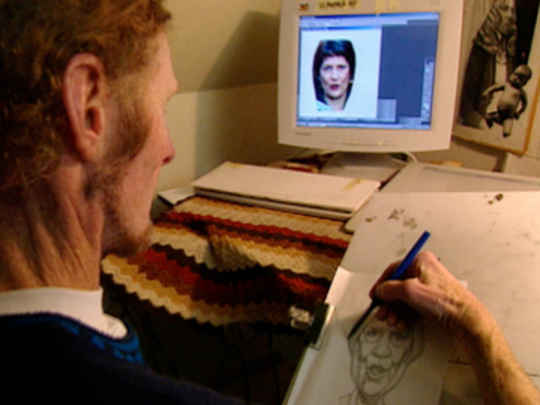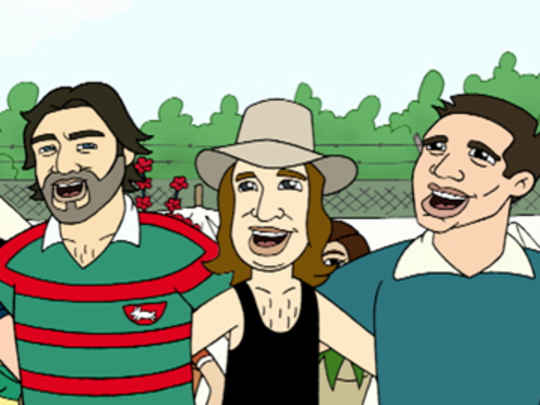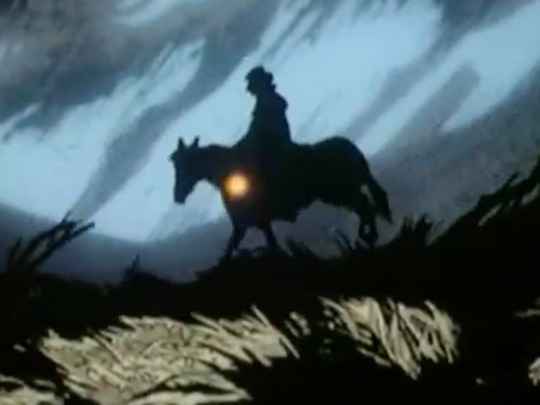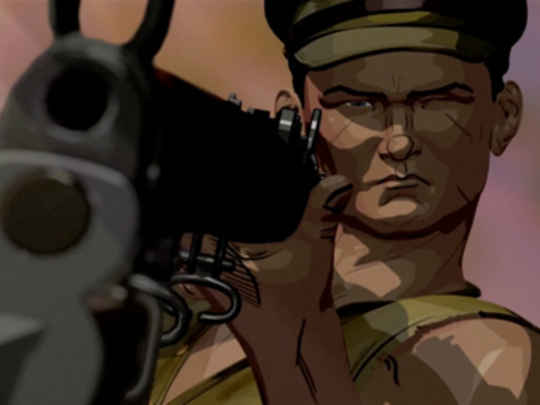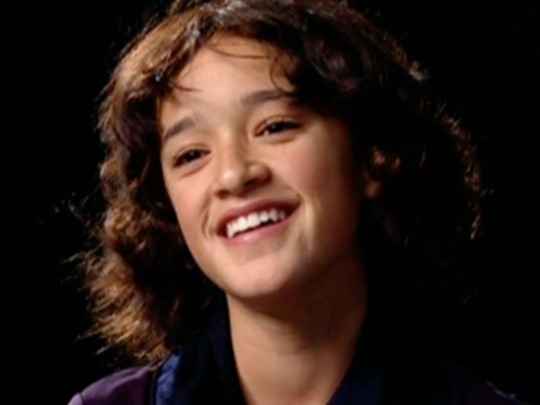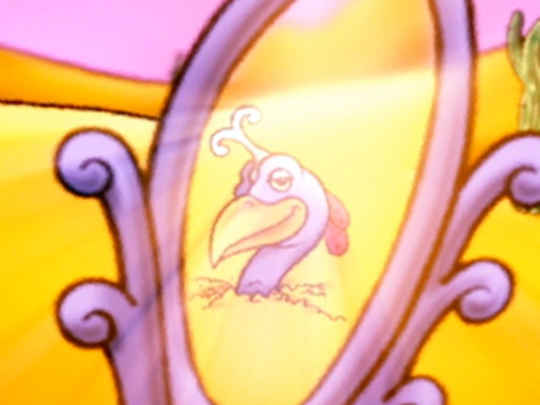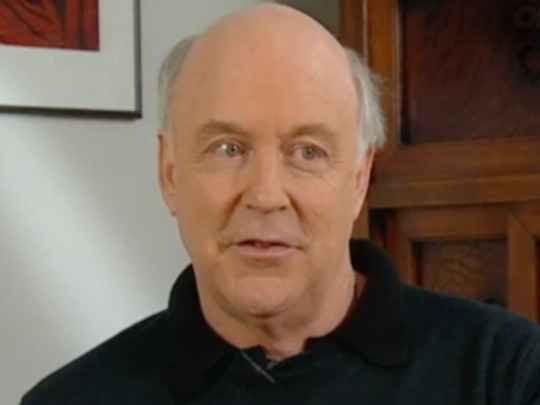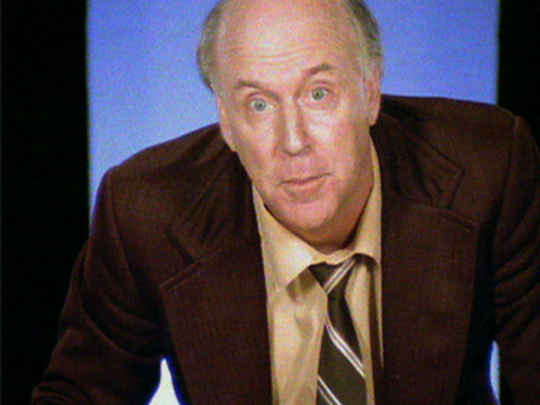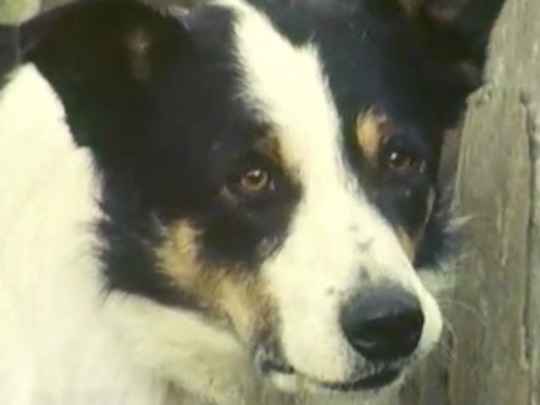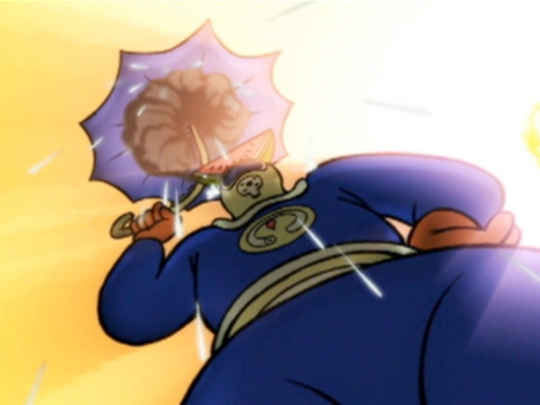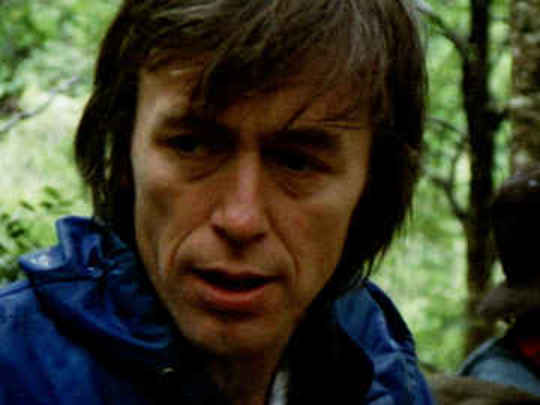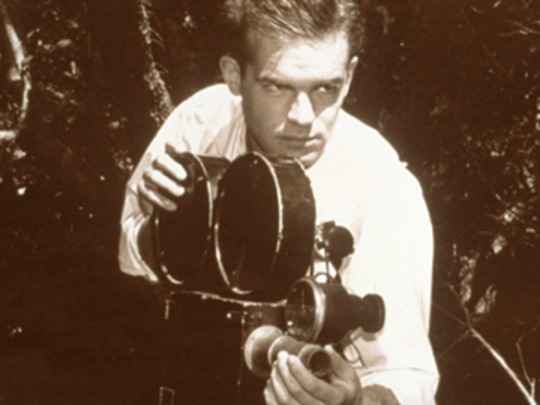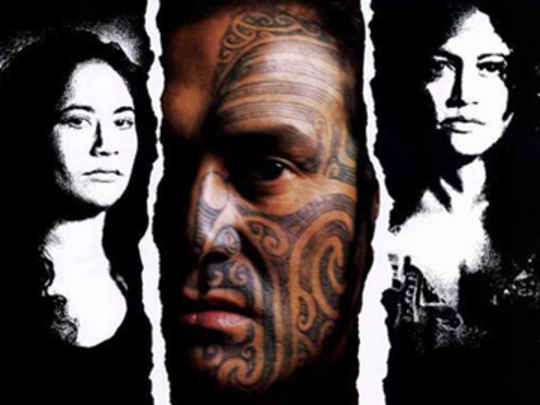The Making of Footrot Flats - The Dog's Tale
Television (Full Length) – 1986
Footrot Flats
Footrot Flats: The Dog's (Tail) Tale, released in late 1986, was New Zealand's first animated feature film, developed from Murray Ball's widely syndicated newspaper cartoon Footrot Flats.
The strip is told from the wry perspective of Dog, a border collie adopted by a farmer, Wal. It follows Wal's bumbling rural adventures running a farm on Footrot Flats: lusting after the bulging hairdresser Cheeky Hobson, whitebaiting with his greenie neighbour, Cooch, being terrorised by the Murphy Brothers and daydreaming of being an All Black.

Wal (John Clarke) shows Dog (Peter Rowley) his new home.
In 1981 Murray Ball was approached by producer Pat Cox, who was keen to make a movie from the strip. Ball was eventually won over, and over the ensuing years writer Tom Scott came on board to work with Ball on the script, while Cox joined forces with John Barnett to get the project financed and off the ground.
Through his work making commercials, Cox knew Sydney animator Robbert Smit, who, as animation director, would be crucial in getting the film's look and animation right. As a faithful (if leisurely) record of the inhabitants of Footrot Flats, it is undeniably accurate.
It's great to see the world of Footrot Flats given such affectionate attention. Like John Clarke's Fred Dagg (Clarke provides the voice for Wal), the world of the comic strip played off nostalgic stereotypes that, even at the time of screening, were more a fond myth than the reality of an urbanised, multicultural New Zealand. Here are the cabbage trees and paddocks of the flats, rusting corrugated iron etc. To see these familiar landscapes animated rather than photographed postcard-style was something new for audiences.
There was an inherent challenge with converting a mute, black and white strip from the newspaper into a talking feature. Readers of Footrot Flats had formed their own voices for the characters; the task of adapting the characters to the screen and remaining true to how readers imagined them, was a tough one. Perhaps toughest of all was finding the voice for Dog, who in the comic strips expressed himself in thought bubbles. Murray Ball admits in the making of documentary that the character was the closest one to him. Peter Rowley (The Billy T James Show) finally got the job, just in the nick of time.

John Clarke in an earlier role as another beloved Kiwi farmer.
The voices for the characters were a starting line-up of Kiwi comedy and acting talent of the time, and audiences suspended disbelief and enjoyed the recognisable repartee. Aside from Clarke and Rowley, the cast includes Billy T James, Rawiri Paratene, Fiona Samuel, Peter Hayden, Dorothy McKegg, and Brian Sergent. There are some shortcomings: the film's soundscape, despite some classic original songs from Dave Dobbyn, feels sparse; and the script's narrative reflects input from energetic individuals coming at the project from differing experiences. But the laconic, finding-humour-in-adversity spirit of the comic strip remains; the film leveraged the large comic strip readership to attract big audiences on both sides of the ditch.
Footrot took $2.5 million at the New Zealand box office, making it the most successful local feature of the 1980s. It was also a rare Kiwi feature to win wide release in Australia (with 60 prints). Dobbyn created two huge hits for the soundtrack: 'You Oughta Be in Love' and 'Slice of Heaven', the latter song featured band Herbs. 'Slice of Heaven' spent four weeks atop the Australian singles chart in 1987, and became known as the unofficial New Zealand national anthem.
Successful commercials producer Pat Cox would go on to make the iconic Speights "onya mate" and Mainland Cheese ads. In Footrot Flats he was mining the same golden weather territory. Six years in development, 15 months in the making, Footrot Flats - The Dog's Tail Tale brought Murray Ball's world to a new audience; its popular success was just reward for Cox's tenacity.
- Tony Hiles spent a decade working in state TV, before setting up company City Associates with Judith Fyfe. Later he directed documentaries on everything from architects to flying, plus a series of films on artist Michael Smither.
